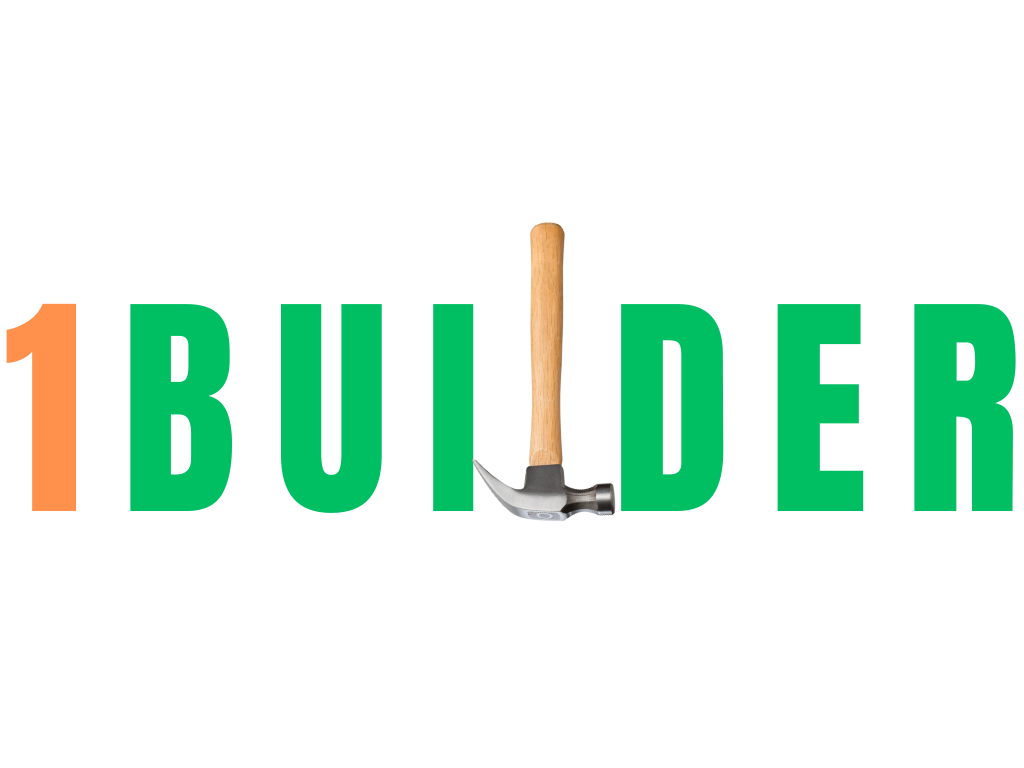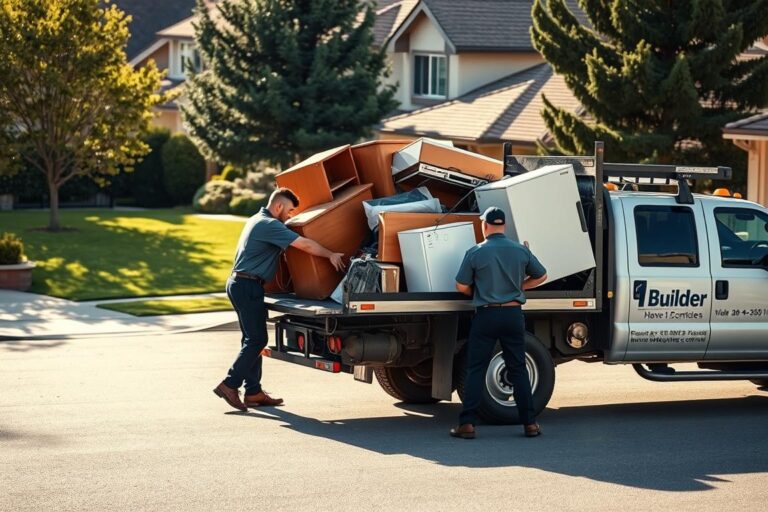Are you aware that a silently wasting water toilet can increase your water bill by hundreds of dollars annually? A running toilet is not just an annoyance; it’s a sign of a problem that needs immediate attention. At 1Builder Handyman Services, with over 16 years of experience, we’ve seen how a malfunctioning toilet can lead to significant water waste.
Understanding the internal mechanisms of your toilet is crucial to diagnosing and repairing problems. Our team specializes in providing professional plumbing solutions, helping homeowners in Placerville, CA, address issues like a toilet keeps running. By exploring the causes and solutions, we aim to empower you with the knowledge to tackle these issues efficiently.
Key Takeaways
- Understand the common causes behind a running toilet and how to address them.
- Learn how a running toilet impacts your water bill and the importance of prompt action.
- Discover the internal mechanisms of a toilet to better diagnose problems.
- Explore DIY repair options and know when to call a professional.
- Find out how preventative maintenance can extend the lifespan of your bathroom fixtures.
Why Your Toilet Keeps Running
A running toilet is a common issue many homeowners face, often without realizing the significant impact it can have on their water consumption. Many homeowners ignore a toilet that runs randomly and write it off as a minor annoyance, but it’s actually a sign of an underlying issue that could lead to much bigger problems.
The Impact on Your Water Bill
A medium-sized toilet leak can waste a whopping 250 gallons of water per day or 7,500 gallons per month. This massive increase in consumption is certain to make a sizable impact on how much of your budget goes to your utility companies, leading to a substantial increase in your water bill.
Common Signs of a Running Toilet
Common signs of a running toilet include the sound of water continuously flowing, the toilet flushing on its own, or having to jiggle the handle to stop the water flow. Some toilet leaks are so quiet that you may not even be aware of the problem until you receive an unusually high water bill. Understanding these signs can help you address issues before they lead to significant water waste or damage.
As “a stitch in time saves nine”, addressing running toilet issues promptly not only saves water but also prevents potential water damage to your bathroom floor and surrounding areas. By being aware of the signs and taking timely action, you can avoid unnecessary waste and expenses.
Understanding How Your Toilet Works
To fix a running toilet, it’s crucial to understand the inner workings of your toilet. The toilet tank contains several key components that work together to create the flushing action.
The Tank Mechanism Explained
The toilet tank is equipped with several important parts, including the flapper, fill valve, overflow tube, and float mechanism. The flapper is a rubber or plastic valve that covers the hole at the bottom of the tank. The fill valve is responsible for refilling the tank with water after each flush. The overflow tube prevents the tank from overflowing by directing excess water into the bowl. The float mechanism, which includes the float ball and float arm, controls the fill valve by rising and falling with the water level.
| Component | Function |
|---|---|
| Flapper | Covers the hole at the bottom of the tank |
| Fill Valve | Refills the tank with water after each flush |
| Overflow Tube | Directs excess water into the bowl to prevent overflowing |
| Float Mechanism | Controls the fill valve by rising and falling with the water level |
The Flushing Process
When you press the flush lever, it lifts the flapper, allowing water to flow from the tank into the bowl. As the tank empties, the float ball drops, opening the fill valve to refill the tank. The overflow tube serves as a safety mechanism to prevent flooding by directing excess water into the bowl if the water level rises too high. Understanding how these components interact helps you identify which part may be causing your toilet to run continuously.
Running Toilet Fix Common Causes Placerville CA
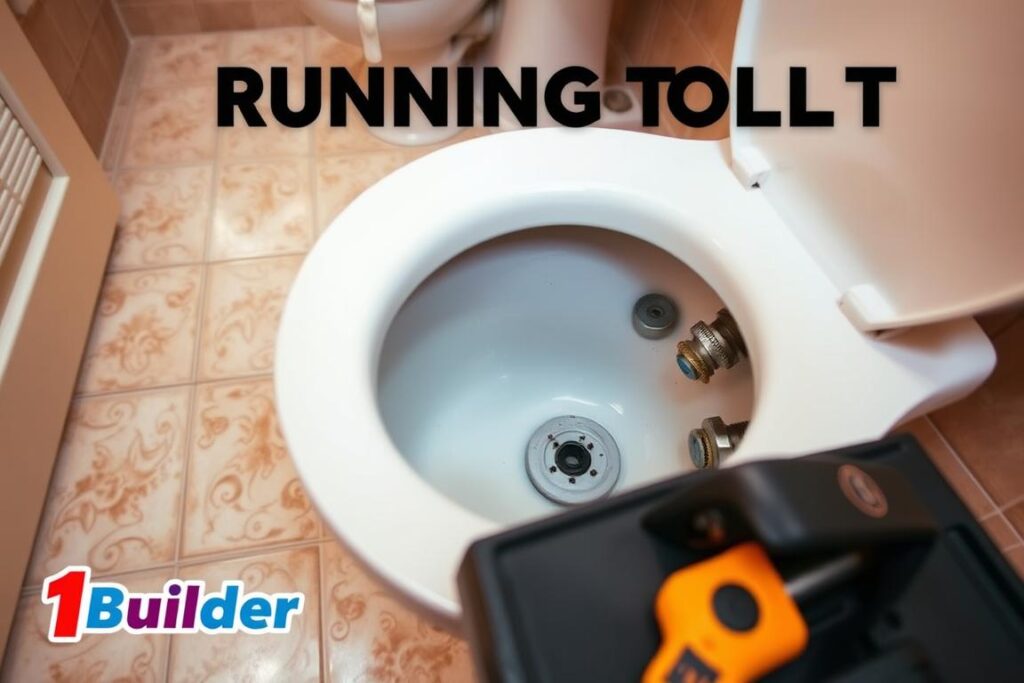
If you’re experiencing a constantly running toilet in Placerville, CA, understanding the common causes is the first step towards a fix. A running toilet can waste a significant amount of water, leading to higher utility bills and unnecessary strain on local water resources.
In Placerville, CA, several common issues typically cause toilets to run continuously. Understanding these causes can help homeowners diagnose and potentially fix their toilet issues.
Faulty Flappers
A faulty flapper is one of the most common causes of a running toilet. The flapper can become warped or damaged over time, preventing a proper seal and allowing water to leak from the tank into the bowl. Regular wear and tear can cause this, or it might be due to the use of harsh toilet cleaning products.
Problematic Fill Valves
The fill valve is another critical component that can cause issues if it’s not functioning correctly. Sediment buildup, worn components, or improper adjustment can prevent the valve from closing completely, leading to continuous water flow into the overflow tube.
Float Ball Issues
In older toilet models, the float ball can become waterlogged or be improperly adjusted, causing the water level in the tank to rise too high and spill into the overflow tube. Adjusting or replacing the float ball can often resolve this issue.
Chain Length Problems
The chain connecting the flush lever to the flapper must be of the correct length. If it’s too short, it won’t allow the flapper to close properly. If it’s too long, it might get caught under the flapper, preventing a good seal. Adjusting the chain length can often fix a running toilet.
By understanding these common causes, homeowners in Placerville, CA, can take the first steps towards fixing their running toilet and saving water.
Tools and Materials You’ll Need
Before diving into toilet repairs, it’s essential to gather the right tools and materials. Having everything you need within arm’s reach will make the process smoother and more efficient.
Basic Tools for Toilet Repairs
For most toilet repairs, you’ll need a set of basic tools. These include adjustable pliers, screwdrivers (both flathead and Phillips), cutting pliers, an adjustable wrench, and rubber gloves to keep your hands clean and protected. A small bucket or towels are also essential for catching water when disconnecting parts, preventing mess and water damage to your bathroom floor.
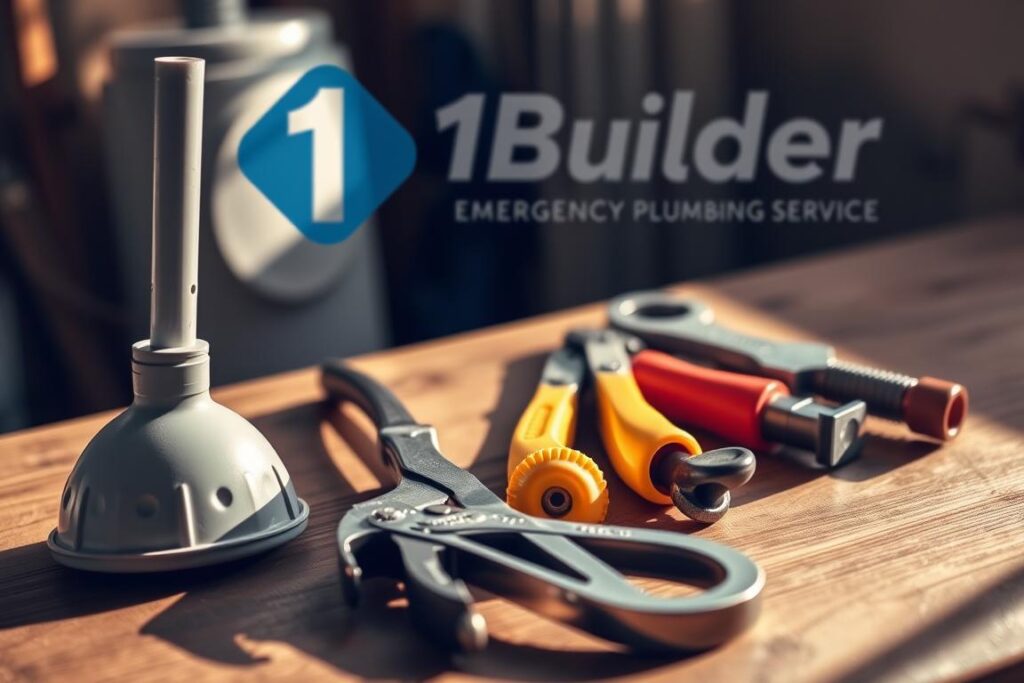
Replacement Parts to Have on Hand
Having replacement parts on hand before starting repairs saves time and prevents multiple trips to the hardware store. Common replacement parts to keep available include a universal toilet flapper, fill valve assembly, float ball or cup (depending on your toilet model), and flapper chain. For Placerville homes with hard water, look for replacement parts specifically designed to resist mineral buildup and corrosion.
At 1Builder Handyman Services, we can help identify and source the correct replacement parts for your specific toilet model if you’re unsure what to purchase. By being prepared with the right tools and parts, you’ll be able to complete your toilet repairs efficiently.
Step-by-Step DIY Toilet Repairs
We’ll guide you through a systematic approach to diagnosing and fixing your running toilet problem. To start, it’s essential to identify the source of the issue, and we recommend beginning with a simple dye test to detect leaks between the tank and bowl.
How to Diagnose the Problem
To diagnose the issue, add a few drops of food coloring to your toilet tank and wait 30 minutes without flushing. If the color appears in the bowl, you have a leaking flapper. This is a clear indication that the flapper needs to be inspected and potentially replaced.
Replacing a Worn Flapper
To replace a worn flapper, start by turning off the water supply valve located behind the toilet and flush to drain the tank. Remove the old flapper by detaching it from the flush valve ears and disconnecting the chain from the flush lever. Then, install the new flapper by reversing these steps, ensuring it’s the correct size and type for your toilet.
Adjusting or Replacing the Fill Valve
If the fill valve is faulty, it may need adjustment or replacement. You can adjust the fill valve by twisting the adjustment screw or sliding the clip along the rod. For replacement, after shutting off the water and emptying the tank, disconnect the water supply line, unscrew the locknut securing the fill valve, and remove the old valve. Install the new fill valve according to the manufacturer’s instructions.
Fixing Float Ball and Arm Issues
For toilets with a float ball, ensure it’s not waterlogged and sitting too high. Check if the ball is waterlogged by removing it and shaking it – if you hear water inside, it needs replacement. Adjust the float arm by gently bending it downward to lower the water level or upward to raise it.
Adjusting the Chain Length
Adjust the chain length so that it allows the flapper to seal properly but doesn’t get caught under it. There should be a slight slack when the flapper is closed. Trim excess chain with cutting pliers if it’s too long or move the connection point on the flush lever if it’s too short.
After completing any repair, turn the water supply back on, let the tank fill completely, and test flush several times to ensure the toilet stops running properly after each flush. For Placerville residents dealing with hard water, consider using silicone or rubber parts that are more resistant to mineral buildup and deterioration.
Dealing with Hard Water and Sediment Build-Up
Mineral-rich water can cause significant problems for toilets, including running issues. In areas like Placerville, where hard water is common, homeowners may experience sediment and mineral deposit buildup in their toilet tanks.
Identifying Mineral Deposits
You can identify mineral deposits by looking for white, yellow, or brownish scale buildup on toilet components, particularly around the flapper seal, valve openings, and overflow tube. These deposits can interfere with the proper functioning of toilet parts.
- Mineral deposits can prevent flappers from sealing properly.
- They can clog small openings in fill valves.
- Deposits create resistance in moving parts, causing premature wear.
Cleaning Techniques for Toilet Components
To address mineral buildup, we recommend using white vinegar as a natural, non-toxic cleaning solution. It’s effective at dissolving mineral deposits without damaging rubber or plastic parts.
- For minor buildup, add 1-2 cups of white vinegar to the tank, let it sit, and then flush several times.
- For more severe cases, remove components and soak them in a vinegar solution overnight.
- Avoid using bleach or commercial toilet cleaners that can deteriorate rubber components.
For homes with particularly hard water, consider installing a whole-house water softener to reduce mineral content and protect plumbing fixtures. Regular cleaning every 3-6 months can prevent significant buildup and extend the life of toilet components.
When to Call a Professional Plumber
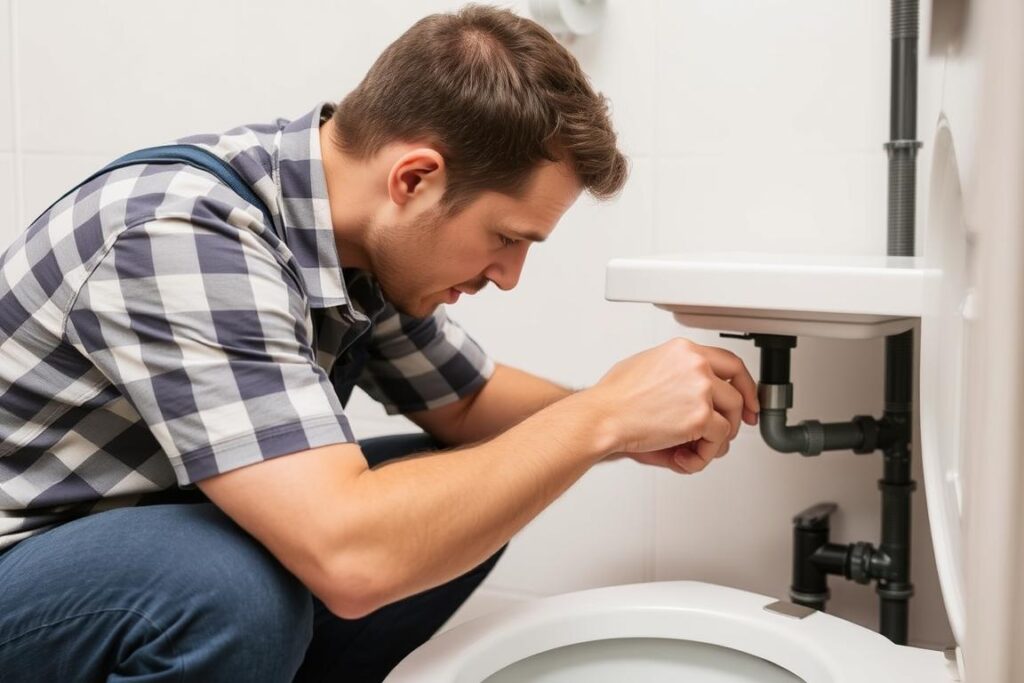
Sometimes, a running toilet can be a sign of a more complex issue that requires professional plumbing expertise. While many toilet issues can be resolved with DIY repairs, certain situations call for professional assistance from experienced plumbers like our team at 1Builder Handyman Services.
Signs of More Serious Plumbing Issues
If your toilet keeps running despite replacing the flapper, fill valve, and adjusting the float, there may be deeper issues within your home’s plumbing system requiring professional diagnosis. Signs that your toilet problem may be more serious include: water leaking around the base of the toilet, cracks in the porcelain, continuous running that persists after multiple repair attempts, or unusual noises coming from the plumbing system.
Benefits of Professional Toilet Repair Services
At 1Builder Handyman Services, our plumbing experts serving Placerville and surrounding areas can efficiently resolve toilet problems while also identifying any related plumbing issues that might cause future problems. Professional plumbers bring specialized tools, extensive knowledge, and experience that allows them to quickly diagnose and fix issues that might take homeowners hours of frustration. By calling a professional, you can avoid water damage and potentially more expensive repairs down the line.
Preventative Maintenance Tips to Avoid Future Problems
Maintaining your toilet regularly can save you money and headaches in the long run. Regular maintenance is key to avoiding problems like randomly running toilets. We recommend cleaning your toilet’s internal mechanisms at least twice a year to prevent sediment and mineral build-up.
Regular Inspection is crucial. Check for any signs of wear and tear on the flapper, fill valve, and float mechanisms. Gently clean tank components with white vinegar every 3-6 months to prevent mineral buildup, especially important in Placerville’s hard water areas.
Some additional preventative tips include avoiding harsh chemical cleaners in your tank, listening for changes in your toilet’s normal operation, and teaching household members to report toilet issues immediately. When replacing parts, invest in quality components rather than the cheapest options.
Consider scheduling an annual plumbing inspection with 1Builder Handyman Services to catch potential issues before they become major problems. For vacation homes or properties that sit vacant for periods of time, consider shutting off the water supply to toilets to prevent undetected leaks. By following these tips, you can prevent future problems and save on your water bill.
FAQ
What are the most common causes of a toilet that won’t stop flushing?
The most common causes include a faulty flapper, problematic fill valve, float ball issues, or an improperly adjusted chain length. These issues can lead to continuous water flow into the toilet bowl.
How do I diagnose the problem with my toilet’s fill valve?
To diagnose a fill valve issue, check if the water level in the tank is too high, causing water to flow into the overflow tube. Also, inspect the fill valve for mineral buildup or debris that might be preventing it from shutting off properly.
Can I adjust the float ball and arm myself?
Yes, you can adjust the float ball and arm by bending the arm to change the float’s position. This ensures the fill valve shuts off when the tank is at the correct water level.
What are the signs that indicate I need to replace my toilet’s flapper?
Signs that you need to replace your flapper include continuous running water, a weak flush, or visible wear and tear on the flapper. A worn-out flapper can cause water to leak from the tank into the bowl.
How often should I perform preventative maintenance on my toilet?
Regularly inspect your toilet’s components, such as the flapper, fill valve, and float ball, every 6-12 months. Cleaning and adjusting these parts can help prevent issues like a continuously running toilet.
Is it worth calling a professional plumber for toilet repairs?
If you’re not comfortable with DIY repairs or if the issue persists after attempting to fix it, it’s best to call a professional plumber. They can diagnose and fix complex problems, ensuring your toilet operates efficiently.
How can I reduce mineral deposits in my toilet tank?
To reduce mineral deposits, use a toilet tank cleaning product or a mixture of vinegar and water to clean the tank and its components. Regular cleaning can help prevent the buildup of minerals from hard water.
